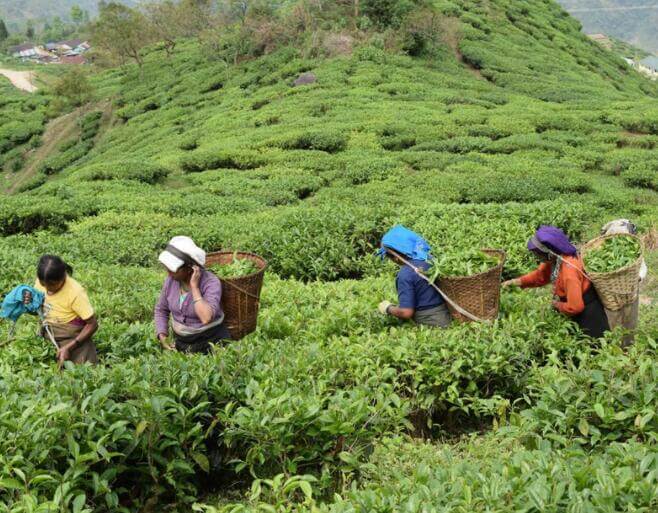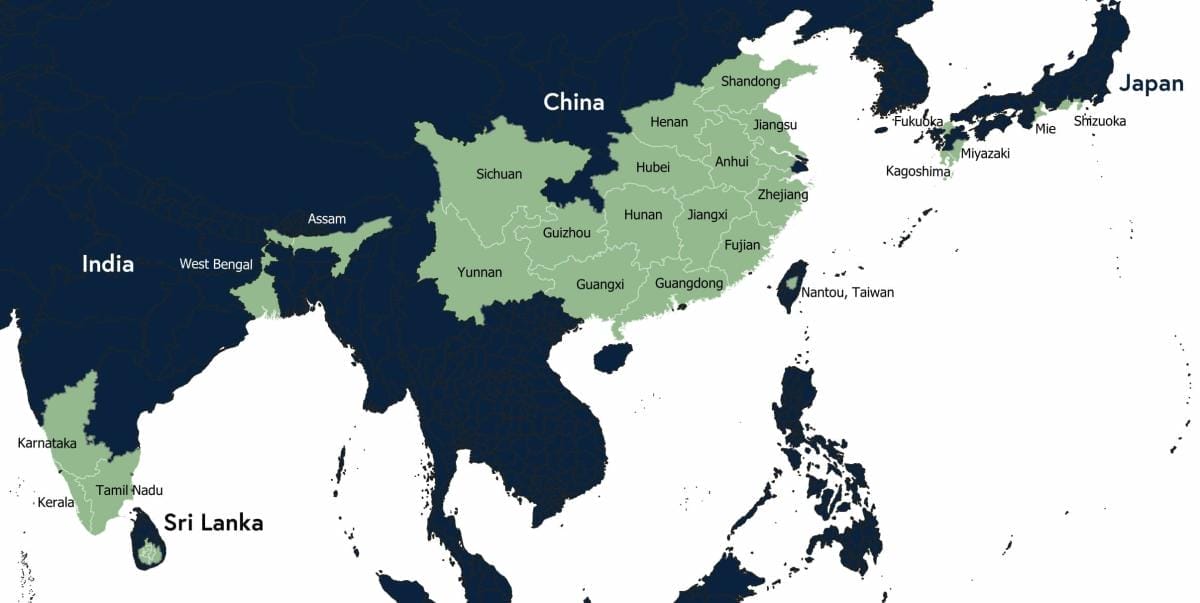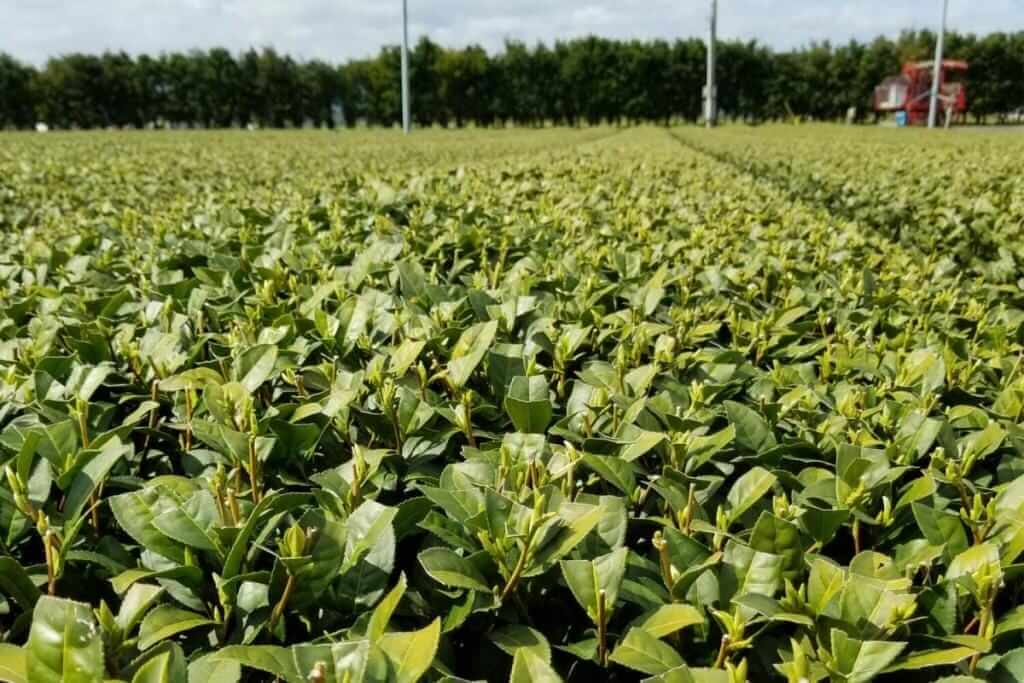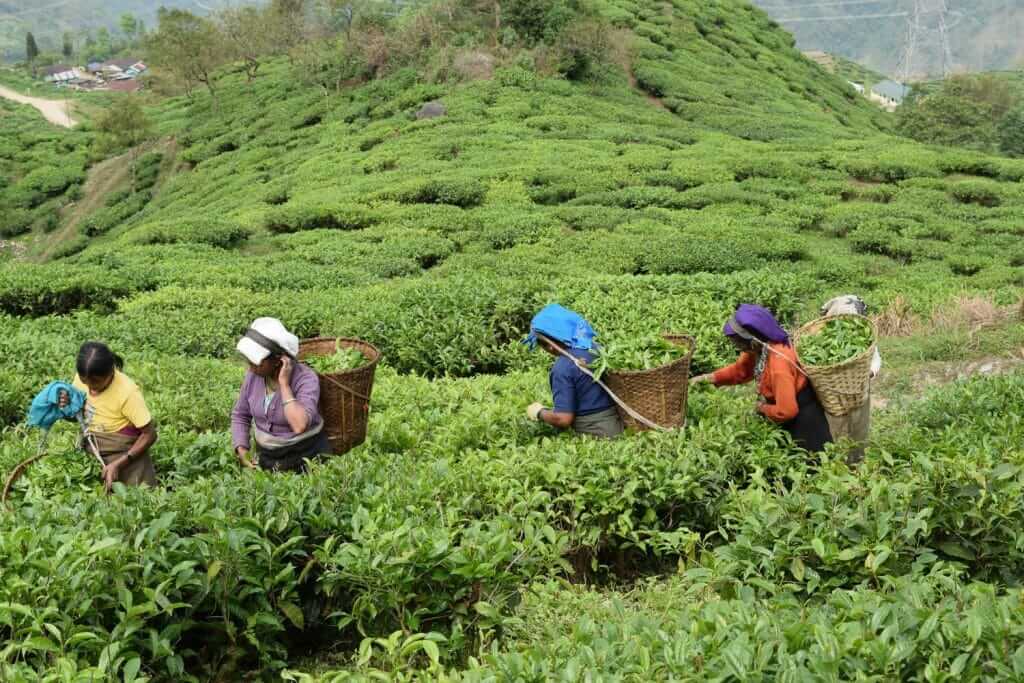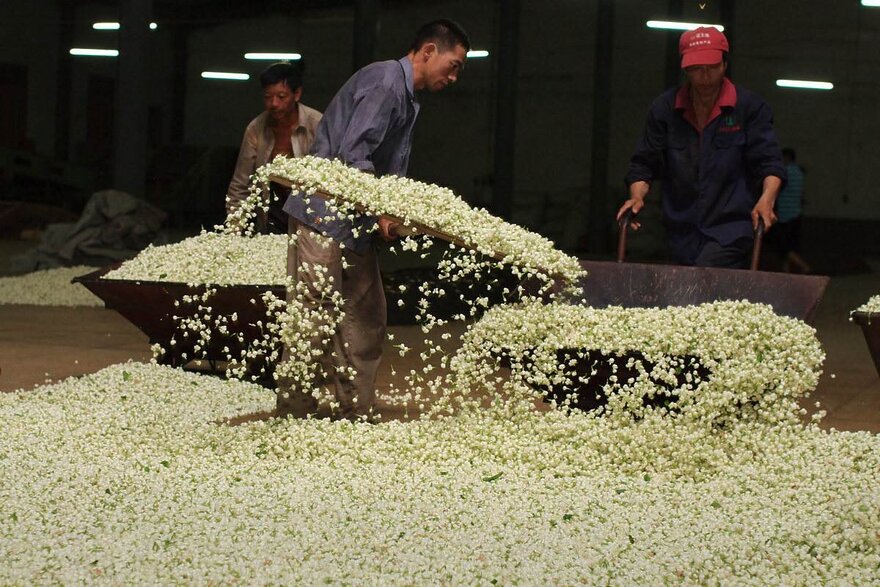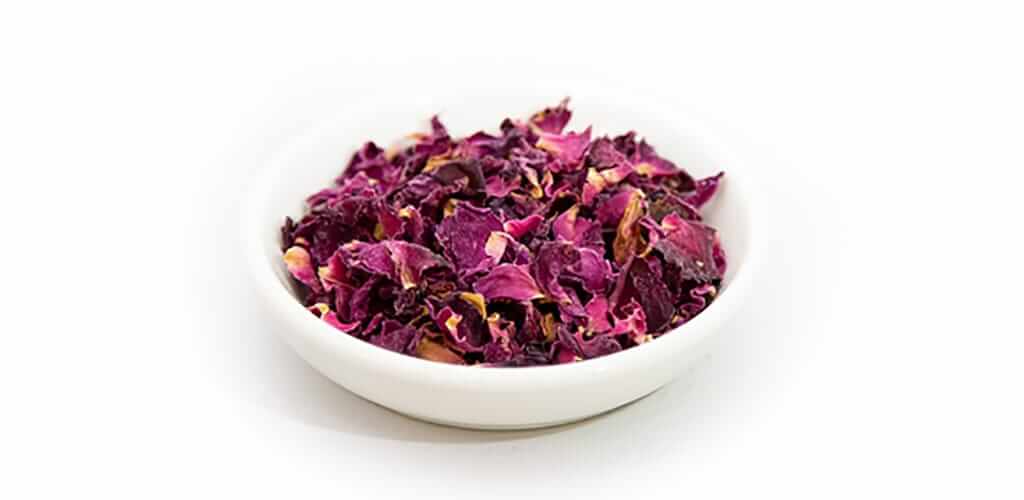Specialty tea is a global industry that can feel a bit daunting to wrap your head around at times. Between different subspecies, processing methods, origins, flushes, grading systems, and a dozen other factors, there is a fairly steep learning curve for someone is just getting into the industry. If you’re new to buying specialty tea, it can be difficult to navigate these waters. To help you out, we put together this article to cover some specialty tea basics. We hope this gives you the resources needed to make informed decisions about the types of tea you purchase.
Where does Specialty Tea come from?
Specialty tea comes from the buds and leaves of the Camellia sinensis plant, an evergreen shrub or small tree. After three to five years of growth, specialty tea producers are able to harvest tea from the Camellia sinensis plant. The average lifespan for these tea plants is between 30 to 50 years.
The birthplace of tea is widely considered to be the Yunnan province in China. This region is home to ancient tea trees, believed to be thousands of years old! Since its origin in China, tea is now grown all over the world. Major specialty tea producing countries include India, Sri Lanka, Kenya, Japan, Turkey, and Argentina, among many others.
The Subspecies of Specialty Tea
Did you know that there are two main subspecies of tea? Camellia sinensis sinensis and Camellia sinensis assamica. The camellia sinensis sinensis strain is native to China and has smaller aromatic leaves. Camellia sinensis assamica, on the other hand, has larger leaves and is native to India. Additionally, assamica can thrive at lower elevations with harsher sunlight. Both of these subspecies do best in tropical and sub-tropical climates. They thrive in these environments where they can get at least 50 inches of rain a year and temperatures between 68F and 86F.
There are further variations in specialty tea that are naturally occurring. One example of this is the Da Ye “big leaf” varietal. This varietal grows in the Yunnan province of China.
In addition to these two main subspecies of tea, there are also cultivated varieties or “cultivars”. These cultivars are variations that were purposely created via human intervention. Examples of these cultivars include the TRFK 306 cultivar of purple tea grown by the Tea Research Foundation of Kenya.
Specialty Tea Processing Methods
Now that you’re knowledgeable of the subspecies of tea, its important to understand the different processing methods of tea.
White Tea
White tea is the least processed of all teas. After harvest, specialty tea producers wither and dry the tea leaf. Due to this, some oxidation occurs naturally. White tea originates from Fujian province, China. Today, Taiwan, Nepal, Thailand, Sri Lanka, and India also produce white tea.
Learn more about white tea here.
Green Tea
Green tea is the least oxidized of all teas. After harvest, specialty tea producers heat the tea leaf in a process called “kill green”. The purpose of kill green is to prevent oxidation. In China, they typically do this step via pan-firing, while in Japan steaming is favored. China is the largest exporter of green tea.
Learn more about green tea here.
Oolong Tea
Oolong, or Wu Long, is a semi-oxidized tea. Processing styles vary widely and different styles of rolling and roasting result in various shapes and flavor profiles. The Fujian and Guangdong provinces of China are the top producers of oolong, and the second top producer is Taiwan. Taiwan specializes in high-quality and unique oolong.
Learn more about oolong tea here.
Black Tea
Black tea, also known as Red tea in East Asian languages, is a fully oxidized tea. After harvesting, specialty tea producers roll, crush or tear tea leaves to encourage oxidation. The majority of the tea consumed in the U.S. is black tea!
Learn more about black tea here.
Puer (Pu-erh) Tea
Puer, or Pu-erh, is also known as Dark tea originated in the Yunnan Province of China. This is a specific type of tea that has been fermented and aged.
There are two primary types of puer, sheng puer and shou puer. Sheng puer is produced via a longer natural process. For shou puer, however, the fermentation process is quicker since the producers wet pile the leaves. Puer teas continue to develop as they age. Additionally, when stored properly, puer can continue to age for several decades.
Yellow Tea
The processing method for yellow tea is similar to green tea with one additional step. This type of tea goes through wet piling and encasing for several days, resulting in a more mellow flavor profile and lighter color than green tea.
Purple Tea
Purple tea is a unique type of tea that produces a red/purple color leaf instead of green. This type of tea originally grew in the wild in Yunnan and Assam. Over the past few decades, the Tea Research Foundation of Kenya began to cultivate it in Kenya. Kenya made its cultivar of purple tea commercially available in 2011, so this type of tea is still very new to the global market!
Herbal Tea
But what about herbal teas? Herbal tea, or tisanes, actually do not contain any Camellia sinensis. Instead, these are botanicals or blends of botanicals. Herbal teas are typically caffeine free, with some exceptions such as yerba mate, yaupon, and cacao. Popular tisanes are dried fruits, flowers, herbs, spices, and grains.
Terms for Grading Specialty Tea
Systems for grading tea vary between countries. Some specific types of tea even have their own grading system, such as Dragonwell. This can make understanding tea grades feel convoluted! Chinese teas are ranked with numbers 1 through 9, with 1 being the highest grade and 9 being the lowest. Season of harvest is also taken into consideration, with earlier flushes usually being prized. The most used system used is the British “Orange Pekoe” system. This focuses on leaf size and appearance, and whether the leaf is broken or whole.
Orange Pekoe System
OP – Orange Pekoe. Wiry, large leaves without a golden tip.
FOP – Flowery Orange Pekoe. Whole leaf tea comprised of the bud and first two leaves of the tea plant.
GFOP – Golden Flowery Orange Pekoe. Some buds have tips.
TGFOP – Tippy Golden Flowery Orange Pekoe. All buds have tips.
FTGFOP – Finest Tippy Golden Flowery Orange Pekoe. Exceptionally high quality.
SFTGFOP – Special Finest Tippy Golden Flowery Orange Pekoe. Unique and rare top quality teas.
Broken tea leaves are graded separately, starting with BT (Broken Tea), and continuing with the same acronyms of whole leaf grading. BOP (Broken Orange Pekoe) is the main broken grade. Tea can be broken down even further into fannings and dust. Fannings are typically used in mass produced sachets and iced tea filters.
Japan Grading System
Other tea producing countries have their own grading systems. These are the most common grades used in Japan. The Japanese grading system also takes into account whether or not the tea was grown in shade or full sunlight.
Kukicha – lowest quality, comprised on the twigs and stems left after harvesting leaves.
Bancha – late season harvest tea, this is an everyday tea. Full sunlight.
Sencha – earlier season harvest tea, and one of the most popular teas in Japan. Full sunlight.
Gyokuro – “jade dew” or “jewel dew”. High quality and expensive shade grown tea.
Tencha – a variation of gyokuro, the chief difference between tencha and gyokuro is that gyokuro is the bud and two leaves, while tencha is the bud and three leaves. Gyokuro is rolled, tencha is left flat so it can have its veins stripped.
What are matcha and hojicha?
As Japanese teas have become more popular in the West, matcha has become a staple menu item for many cafés. Matcha is made by stone grinding shade grown teas such as tencha. Hojicha is roasted tea twigs and stems. It can be enjoyed as a loose leaf tea, but is commonly seen stone ground into a powder like matcha.
What does flush mean?
Flush is the time period in which a Camellia sinensis plant produces new buds. This time period can range from late February to early November depending on the terrior and variations in climate and weather. The earlier flushes for each region is usually prized. See below for more information based on the region the specialty tea is from.
India, Sri Lanka & Nepal
First Flush : March/April
Second Flush : May/June
Monsoon Flush : July/August
Autumnal Flush : October/November
Learn more about tea from India here.
China & Taiwan
Qing Ming “clear bright” : before April 4 – 6
Yu Qian “before the rains” : before April 20
Gu Yu “grain rain” : before May 5
Lu Xia “start of summer” : before May 21
Learn more about tea from China here.
Japan
Shincha : “new tea”, the first harvest of the year
Ichibancha : “first tea”, April/May
Nibancha : “second tea”, June/July
Sanbancha : “third tea”, August
Yonbancha : “fourth tea”, September/October
Learn more about tea from Japan here.
South Korea
Ujeon : “before the rain”, before April 20th
Sejak : “small sparrow”, before May 6th
Jungjak : “medium sparrow”, before May 21st
Daejak : “large sparrow”, summer harvest
Africa
The harvest for teas from East Africa is year-round since there is not a cold season. Production peaks during rainy seasons.
South America
The harvest for tea from countries such as Argentina, Brazil, and Peru is November through April.
Other Qualities for Judging Specialty Teas
The standard systems for grading tea are more focused on the appearance of the leaf, quality of processing, and time of year harvested. What about the characteristics that can be qualified when brewing and drinking the tea? When cupping teas, the aroma, clarity, cup color, and body are factors to consider.
Cup Clarity
Brewed tea should be clear and bright. Cloudiness may indicate a poorer quality, however, water hardness can also cause this.
Cup Color
Different types of tea will have characteristic cup colors. Green and yellow teas should have a shiny pale green/yellow color. White tea should brew a light gold color. Black teas will range from coppery to deep red. Purple teas will have a pale lavender color.
Aroma
Aroma is the smell that a tea gives off. Look for a pleasant aroma without negative attributes like smelling stale, moldy or burnt. Some good aromas are fruity, vegetal, floral, spicy, woody, roasted, mineral, and milky.
Taste
Similar to aroma, flavors should be clear and balanced. Flavors that are overly bitter, muddy, or shallow are undesirable. Also consider how the flavor changes after tasting the tea. Do the notes linger on the tongue, fade quickly, or leave an unpleasant aftertaste?
Astringency
Astringency is the pungency or bitterness of the liquor that can result in a “dry” mouth feeling. While briskness is characteristic of some teas, excessive astringency indicates a lower quality or improper brewing.
Body
Body is the fullness, strength, and viscosity of the brew. Specialty teas can have a light, medium, or heavy body.



